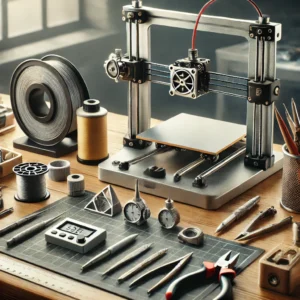“Master 3D Design: A Beginner’s Guide to Creating Stunning Models”

3D design is a powerful tool for bringing your ideas to life in the digital realm. Whether you’re a hobbyist, a student, or a professional looking to enhance your skill set, understanding the basics of 3D design is essential. In this guide, we will walk you through the fundamentals of 3D design, the software tools available, and how to start creating your own models.
What is 3D Design?
3D design involves creating a three-dimensional representation of objects using specialized software. Unlike 2D design, which is limited to height and width, 3D design incorporates depth, allowing for more realistic and complex models. This technology is widely used in industries such as animation, game development, architecture, and product design.
Essential Tools for 3D Design
To get started with 3D design, you need the right tools. Here are some popular software options:
- Blender: A free and open-source tool that’s perfect for beginners and professionals alike.
- Autodesk Maya: A powerful software suite used in the film and gaming industries.
- Tinkercad: A browser-based tool that’s user-friendly and ideal for those new to 3D design.
- SketchUp: Known for its ease of use, particularly in architectural design.
Each of these tools offers a range of features that can help you create anything from simple models to intricate designs.
Steps to Create Your First 3D Model
- Conceptualize Your Design: Start with a clear idea of what you want to create. Sketch it out on paper or use digital tools to plan your design.
- Choose the Right Software: Based on your project’s complexity, pick the software that best suits your needs.
- Learn the Basics: Familiarize yourself with the software interface, tools, and basic functions. Most platforms offer tutorials for beginners.
- Start Modeling: Begin by creating basic shapes and gradually refine them into your desired model.
- Refine and Detail: Add textures, colors, and fine details to bring your model to life.
- Render and Export: Once satisfied, render your model and export it for use in other applications or for 3D printing.
Tips for Success in 3D Design
- Practice Regularly: Like any skill, 3D design improves with practice. Dedicate time each week to honing your craft.
- Explore Tutorials: Take advantage of the vast number of tutorials available online. They can help you learn new techniques and solve specific challenges.
- Join a Community: Engaging with other 3D designers can provide inspiration, feedback, and support.
- Stay Updated: The world of 3D design is constantly evolving. Keep up with the latest software updates and industry trends.



